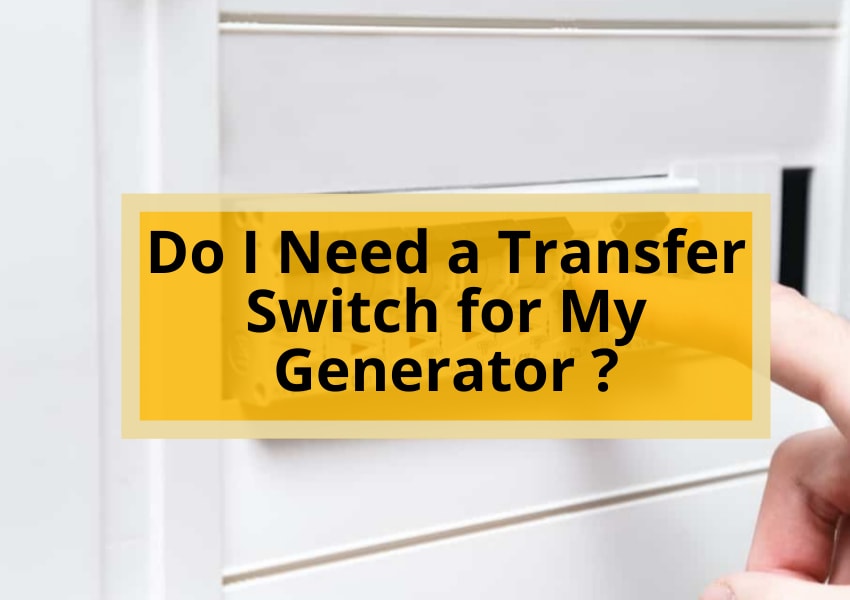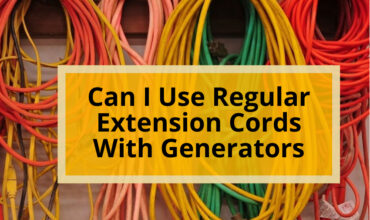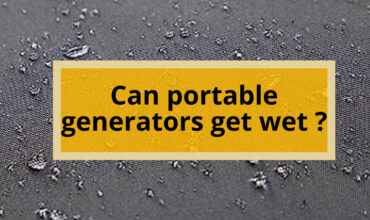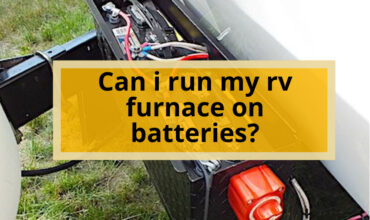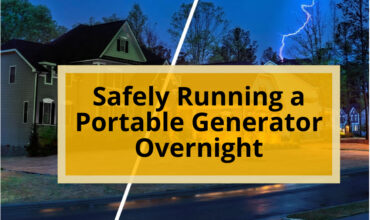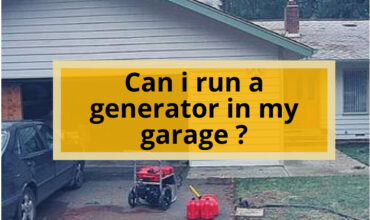Yes, a transfer switch is recommended for connecting your generator to your home’s electrical system. A transfer switch ensures safe and proper operation by preventing back feeding of electricity into utility lines, which could potentially harm utility workers or damage the generator. It also allows you to easily switch between utility power and generator power during an outage without the need for manual rewiring.
Stay connected and keep your home safe by understanding the importance of a transfer switch for your generator.

Mechanism Of Transfer Switches
To understand the mechanism of transfer switches, you should know that they are miniature circuit breaker panels that draw electricity from the generator instead of the power company.
When a power outage occurs, the transfer switch automatically detects the loss of utility power and switches the load to the backup generator. This ensures a continuous supply of electricity to your home or business.
Transfer switches are designed to handle the electrical load and prevent overloading of the generator. They provide a safe and efficient transfer of power, protecting your appliances and electrical system.
Transfer Switches’ Various Types
There are two types of transfer switches: automatic and manual.
An automatic transfer switch seamlessly routes power from the main source to the backup source without any human intervention. It is typically used with whole-home standby generators and is ideal for areas with frequent power outages. With an automatic transfer switch, every circuit in the home can be powered during an outage.
On the other hand, a manual transfer switch requires human intervention to turn it on. It is less expensive than an automatic switch and is suitable for use with portable generators. However, it requires the generator to be rated for at least 3,600 watts and requires manual switching between grid power and generator power.
When choosing a transfer switch, consider the appliances or devices you want to power during an outage and make sure to choose one that can handle the required voltages and total wattage.
What To Consider When Choosing a Transfer Switch?
When choosing a transfer switch, there are several key factors to consider.
Type Of Appliances or Devices That Need to Be Powered
you need to determine the type of appliances or devices that will need to be powered during an outage. This will help you determine the necessary wattage and voltage requirements for the transfer switch.
Appliances Wattage and Voltage
To determine if your appliances can be powered by a generator, you should check the wattage and voltage requirements for each device. The wattage requirement refers to the amount of power needed to operate the appliance, while the voltage requirement refers to the level of electricity the appliance can handle.
It is important to match the wattage and voltage of your appliances with the capabilities of your generator to ensure proper functioning and prevent damage. Most appliances will have this information listed on a label or in the owner’s manual.
Make a list of all the appliances you plan to power with the generator and note down their wattage and voltage requirements. This will help you choose a generator and transfer switch that can handle the power needs of your appliances effectively.
Other Important Features to Look for In a Transfer Switch
Consider the features you want in a transfer switch, such as onboard power meters and weather-resistant inlet boxes. These features can greatly enhance the functionality and durability of your transfer switch.
Onboard power meters provide real-time power consumption monitoring, allowing you to keep track of the electricity usage of your connected devices. This can help you manage your power load more efficiently.
Weather-resistant inlet boxes are essential if you plan to install your transfer switch outdoors. They protect the inlet box from the elements, ensuring its longevity and reliable performance.
Additionally, you may want to look for a transfer switch that has UL 1008 certification, which ensures electrical safety.
A long extension cord, at least 20 feet in length, with the correct plug and receptacle type is also important for a proper and secure connection.
How To Install a Transfer Switch?
When installing a transfer switch, it is important to hire a licensed professional electrician. This ensures that the installation is done correctly and safely. The electrician will have the necessary knowledge and expertise to handle the electrical wiring and connections involved in the installation. They will also ensure that all local electrical codes and regulations are followed.
- The first step in installing a transfer switch is to determine the appropriate location for the switch. It should be installed near the main electrical panel and in a location that is easily accessible.
- Once the location is determined, the electrician will shut off the power to the main panel and disconnect it from the utility grid.
- They will then install the transfer switch, connecting it to the main panel and the generator.
- After the physical installation, the electrician will then make the necessary electrical connections. This includes connecting the transfer switch to the circuit breakers in the main panel and to the generator.
- They will also ensure that all grounding and bonding requirements are met.
- Once the connections are made, the electrician will test the transfer switch to ensure that it is functioning properly.
Overall, hiring a licensed professional electrician for the installation of a transfer switch is crucial. This will ensure a safe and effective installation process.
How To Use a Transfer Switch?
To use a transfer switch, follow these steps:
1. Start by setting all switches to the LINE position.
2. Connect the generator to the inlet box or switch using the appropriate extension cord.
3. Start the generator and let it warm up.
4. Switch the switches to the GENERATOR position one at a time, ensuring a smooth and controlled transfer of power.
During a power outage, the transfer switch will automatically detect the loss of power and switch to the backup generator. This eliminates the need for manual intervention and ensures a seamless power transfer.
Frequently Asked Questions
Do All Generators Need a Transfer Switch?
Not all generators require a transfer switch, but it is generally recommended for safety and convenience.
While portable generators don’t strictly need a transfer switch, it is usually a good idea to have one, especially in a residential setting. Having a transfer switch allows you to power devices through the circuit breaker panel, eliminating the need for using extension cords.
Hardwired devices like dishwashers, hot water heaters, air conditioning units, and ceiling fans can be powered through the transfer switch. It ensures a safe and efficient transfer of power from the generator to your home’s electrical system, preventing backfeeding and potential hazards.
Additionally, using a transfer switch allows for easier control and distribution of power during a power outage. So, while not always mandatory, a transfer switch is highly recommended for the safety and convenience of using your generator.
What Is the Risk of Not Having a Transfer Switch for Your Generator?
The risk of not having a transfer switch for your generator is jeopardizing the safety of your family and utility workers. Without a transfer switch, backfeeding the grid can occur, which puts utility workers at risk and can lead to fires in homes or businesses. Backfeeding happens when a generator is used without a transfer switch, causing line problems that can harm utility workers.
By using a transfer switch, you can safely connect your generator to your home’s electrical system and isolate it from the power grid. This prevents backfeeding and ensures the safety of everyone involved.
Additionally, a transfer switch allows you to power devices through your circuit breaker panel, eliminating the need for extension cords and providing a convenient and efficient solution.
Don’t compromise on safety – invest in a transfer switch for your generator.
Can I Connect a Generator to My House Without a Transfer Switch?
You can connect a generator to your house without a transfer switch, but it is not recommended for safety reasons. A transfer switch is an essential component that ensures a safe and efficient transfer of power between the generator and your home’s electrical system.
Without a transfer switch, there are several risks involved. Firstly, backfeeding can occur, which is when the generator sends power back into the grid, potentially causing harm to utility workers and electrical fires in your home.
Secondly, without a transfer switch, you would need to manually connect each appliance to the generator individually, which can be inconvenient and time-consuming. Furthermore, a transfer switch helps control the load carried by high-powered equipment, preventing damage and electrical fires.
To ensure the safety of your family and utility workers, it is highly recommended to install a transfer switch when connecting a generator to your house.
Do You Need an Expert to Install a Generator for Your Home?
Hiring an expert to install a generator for your home can ensure a safe and efficient setup.
An experienced professional will have the knowledge and expertise to properly install the generator and transfer switch, ensuring that it is done correctly and in compliance with all electrical codes and regulations.
They will be able to assess your specific power needs, determine the appropriate size and type of generator, and install it in the optimal location.
Additionally, an expert installation will help prevent any potential risks or hazards associated with improper installation, such as backfeeding the grid or electrical fires.
What Is the Cost of a Transfer Switch?
Installing a transfer switch can vary in cost depending on factors such as the type of switch, its capacity, and the complexity of the installation.
The cost of a transfer switch can range from $500 to $2,500. Manual transfer switches are generally less expensive, with prices starting around $500. Automatic transfer switches, which provide seamless power transfer during a blackout, tend to be more expensive, starting at around $1,000.
The capacity of the switch also affects the cost, with higher capacity switches being more expensive. Additionally, the complexity of the installation can impact the cost, as more complex installations may require additional labor and materials.
It is important to consult with a licensed professional electrician to determine the specific cost for your transfer switch installation.
Conclusion
In conclusion, when considering the use of a generator, it is essential to have a transfer switch installed.
If you have appliances or devices that require a steady power supply during an outage, a transfer switch is necessary for your generator. A transfer switch allows you to power specific appliances or devices directly from your generator, without the need for extension cords or individually connecting each device. This ensures a safe and efficient transfer of power, preventing any damage or electrical fires.
By using a transfer switch, you can easily control the load carried by high-powered equipment, providing them with the necessary power without overloading the system. It also eliminates the inconvenience of manually connecting each appliance to the generator during a power outage.
With a transfer switch, you can power important devices like refrigerators, air conditioners, sump pumps, and lighting circuits, ensuring that your essential needs are met during an outage.
Don’t overlook the importance of this device, as it plays a pivotal role in safeguarding both occupants and utility workers.
